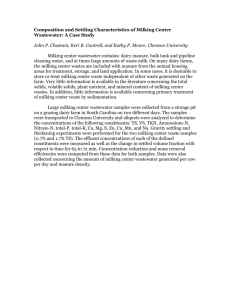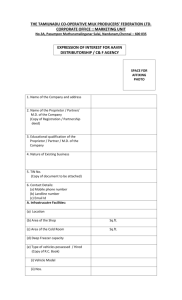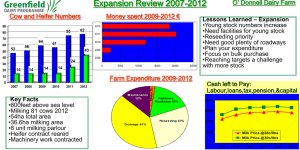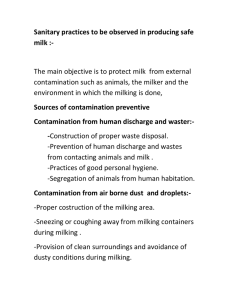septembermoos2015 - Sauk Prairie Veterinary Clinic, SC
advertisement
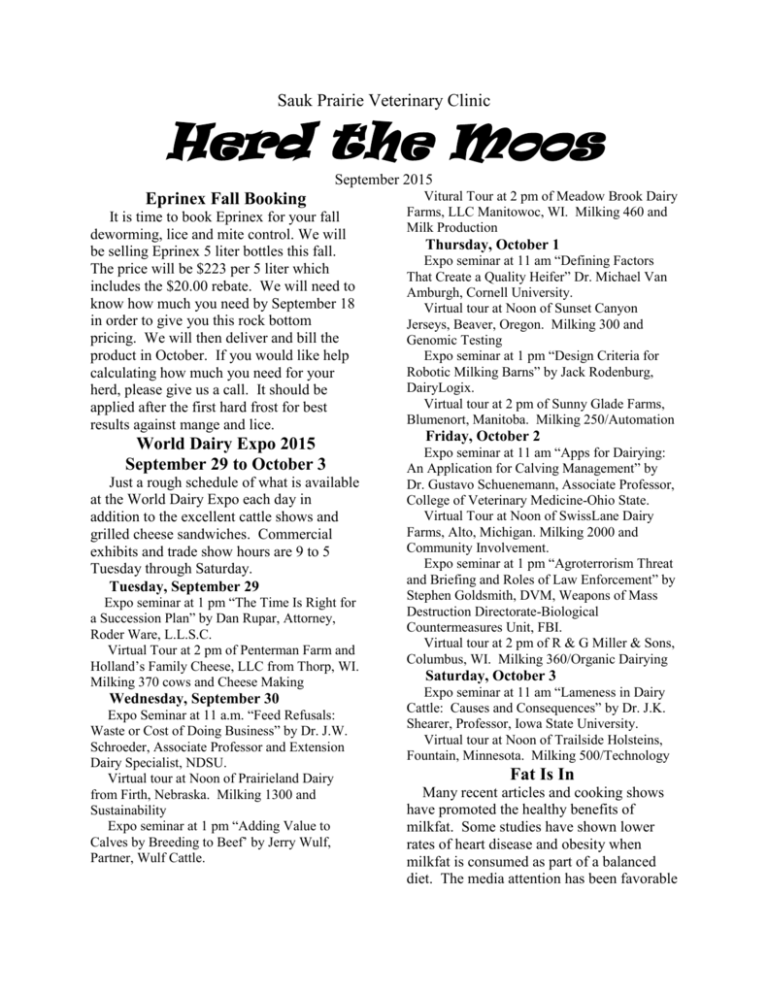
Sauk Prairie Veterinary Clinic Herd the Moos September 2015 Eprinex Fall Booking It is time to book Eprinex for your fall deworming, lice and mite control. We will be selling Eprinex 5 liter bottles this fall. The price will be $223 per 5 liter which includes the $20.00 rebate. We will need to know how much you need by September 18 in order to give you this rock bottom pricing. We will then deliver and bill the product in October. If you would like help calculating how much you need for your herd, please give us a call. It should be applied after the first hard frost for best results against mange and lice. World Dairy Expo 2015 September 29 to October 3 Just a rough schedule of what is available at the World Dairy Expo each day in addition to the excellent cattle shows and grilled cheese sandwiches. Commercial exhibits and trade show hours are 9 to 5 Tuesday through Saturday. Tuesday, September 29 Expo seminar at 1 pm “The Time Is Right for a Succession Plan” by Dan Rupar, Attorney, Roder Ware, L.L.S.C. Virtual Tour at 2 pm of Penterman Farm and Holland’s Family Cheese, LLC from Thorp, WI. Milking 370 cows and Cheese Making Wednesday, September 30 Expo Seminar at 11 a.m. “Feed Refusals: Waste or Cost of Doing Business” by Dr. J.W. Schroeder, Associate Professor and Extension Dairy Specialist, NDSU. Virtual tour at Noon of Prairieland Dairy from Firth, Nebraska. Milking 1300 and Sustainability Expo seminar at 1 pm “Adding Value to Calves by Breeding to Beef’ by Jerry Wulf, Partner, Wulf Cattle. Vitural Tour at 2 pm of Meadow Brook Dairy Farms, LLC Manitowoc, WI. Milking 460 and Milk Production Thursday, October 1 Expo seminar at 11 am “Defining Factors That Create a Quality Heifer” Dr. Michael Van Amburgh, Cornell University. Virtual tour at Noon of Sunset Canyon Jerseys, Beaver, Oregon. Milking 300 and Genomic Testing Expo seminar at 1 pm “Design Criteria for Robotic Milking Barns” by Jack Rodenburg, DairyLogix. Virtual tour at 2 pm of Sunny Glade Farms, Blumenort, Manitoba. Milking 250/Automation Friday, October 2 Expo seminar at 11 am “Apps for Dairying: An Application for Calving Management” by Dr. Gustavo Schuenemann, Associate Professor, College of Veterinary Medicine-Ohio State. Virtual Tour at Noon of SwissLane Dairy Farms, Alto, Michigan. Milking 2000 and Community Involvement. Expo seminar at 1 pm “Agroterrorism Threat and Briefing and Roles of Law Enforcement” by Stephen Goldsmith, DVM, Weapons of Mass Destruction Directorate-Biological Countermeasures Unit, FBI. Virtual tour at 2 pm of R & G Miller & Sons, Columbus, WI. Milking 360/Organic Dairying Saturday, October 3 Expo seminar at 11 am “Lameness in Dairy Cattle: Causes and Consequences” by Dr. J.K. Shearer, Professor, Iowa State University. Virtual tour at Noon of Trailside Holsteins, Fountain, Minnesota. Milking 500/Technology Fat Is In Many recent articles and cooking shows have promoted the healthy benefits of milkfat. Some studies have shown lower rates of heart disease and obesity when milkfat is consumed as part of a balanced diet. The media attention has been favorable as June 2015 saw consumers increase their purchases of whole milk by 7.1% vs. June, 2014. All varieties of beverage milk were up 1.4% in June due primarily to the increase in whole milk sales. After many years of declining sales, whole milk sales have increased for the last 7 months. What is the bottom line on total milkfat in the supply chain? The whole milk sales (3.25% fat), plus the increase in flavored whole milk sales, means that 2.6 million pounds more butterfat was available in June 2015 vs. June 2014. The sales of lowfat milk did decline so the net result is we consumed 1.7 million more pounds of butterfat in June, 2015. Additionally, our appetite for ice cream, frozen custard, yogurt and butter has gone up as well. This has left the US butter market out of step with the world market. Butter averaged $2.318/pound last week while Oceania butter is priced at $1.216/pound and EU butter is $1.378/lb. If the US market holds, we will see imports of cheaper butter and anhydrous milkfat (for other cream based products) flowing into the US market which will put downward pressure on domestic prices. This might translate into cheaper butter for your Christmas cookies but a lower all milk price for late this year and into 2016. Kiwi's Suffering On August 6th, Fonterra (the largest milk procurer in New Zealand) announced its price forecast for the 2015-16 milk season. It is estimating a pay price (including dividends) of $4.25-$4.35/kilogram of milk solids. This translates into a US price between $8.27 and $8.45/cwt. If the forecast holds, it would be the lowest milk price in a decade. When you combine this forecasted price with the cost of production in New Zealand it looks even worse. The most recent data available for cost of production is the 2013-2014 milking season. The numbers from that year show the costs to be $5.17/kilogram of milk solids. This means that the pay price will be $0.80-0.90 below the average production costs. Needless to say, this will most likely lead to a decrease in New Zealand milk production later this year. Perhaps it will soften the export market from New Zealand and tighten up world supplies which could have a positive effect on US prices. Another Unfavorable Holstein Genetic Trait The US Holstein Association announced the discovery of an unfavorable haplotype; it is known as haplotype associated with cholesterol deficiency (HCD). Calves born homozygous, inheriting the abnormal trait from both parents, only survive for a few months after birth. The researchers in Germany that reported HCD found these calves presented with chronic diarrhea, did not respond to treatment and tested negative for viruses/bacteria that may cause similar symptoms. The calves became very thin, depleting all fat reserves in the body, and because of their weakened state many developed secondary diseases, mostly pneumonia. Most of the calves died between 3 weeks and 6 months of age from apparent starvation or from a secondary disease. Calves that carry one unfavorable gene and one normal gene have been reported to be unthrifty but the animals do seem to survive. We do not currently have a test for this specific haplotype but if the pedigree is known it can help in making a diagnosis. The defective haplotype traces back to Canada and a bull named MAUGHLIN STORM (born 1991). The primary source of the normal haplotype is WILLOWHOLME MARK ANTHONY (born 1975). The HCD results for all animals that were genomic tested will be available after the August 2015 genetic evaluations. If you have previously done genomic testing in your herd, HCD results will be available for these animals and will be included in future genomic report.



